The Black Genesis of Chess – Moors of Spain
Chess is a game that we all love and enjoy for its build-up of tension and it infinite possibilities. Black chess players have recently begun to make headway into the upper echelons of the international chess arena. However, there was a historical precedent for Blacks in a mighty people who served as the genesis of modern-day chess.
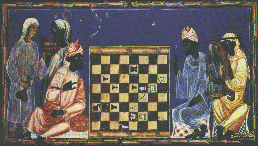
Moors of Spain playing a casual game of Shatranj. Notice the royal setting. This picture is set in Castile and dated in the year 1283 AD.
Who were these mighty people? They were the Moors of Africa who led a militaristic campaign against Spain in 711 AD and brought with them a game called “Shatranj.” Shatranj was derived from Chaturanga, a board game originating in India in the 6th century which featured only four types of pieces: elephants, chariots, cavalry, and infantry. The Moors also brought another fame to Spain called el-Quirkat, a direct ancestor to checkers.
The Moors were a proud civilization known for spectacular advances in science which included tracing “the curvilinear path rays of light through air.” This is the forerunner of eyeglasses. The Moors also used the astrolab and compass for navigation and their methods of surgical medicine were at advanced states.
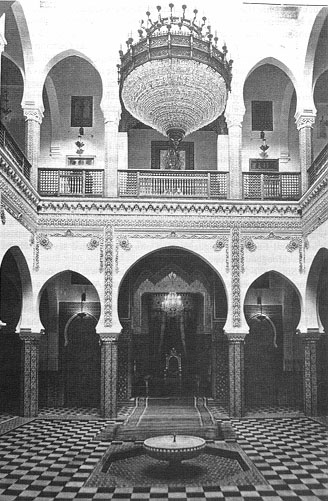
Palace in Tetouan, Morocco demonstrating the ornate beauty
and sophistication of Moorish architecture
They excelled in herbology and employed food preservation techniques enabling the storage of wheat for as long as 100 years! In addition, the sophistication of the cities in Spain was bolstered by the presence of stunning beauty of Moorish architecture.
Despite the Moors advances in science and scholarship, they also enjoyed activities such as horse-riding, marksmanship, polo, backgammon, and . . . chess. It is befitting that chess was a favorite Moorish pastime as many enjoyed the challenge of warfare strategy and tactics, and perhaps many were strong players. Although Hannibal, the Moor of Carthage (247-183 BC) would not have played Shatranj, his military ingenuity would indicate that he participated in some aspect of war simulation.
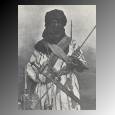
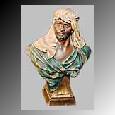
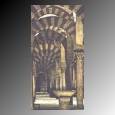

The Moorish empire went through many tests and dynasties before political and social fractures contributed to the downfall of an empire lasting almost 800 years. The Moors signed the act of capitulation (equivalent to resigning) and surrendered their last stronghold, Granada, in 1492. What follows is interesting. Queen Isabella (Isabel da Católica) of Castile was looked at as a key figure for her support in the “Reconquista” to drive the Moors from Spanish soil.
In addition to the Queen, King Ferdinand of Aragon backed Cardinal Ximenes de Cisneros who would order the destruction of Moorish libraries and mosques and subsequently, their expulsion and slaughter. After this period, Shatranj was modified!! New rules were added such as castling, two-square pawn advance, and en passant capture.
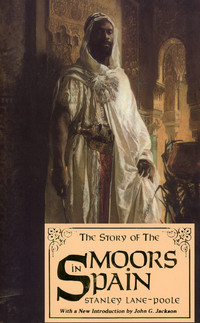
The Queen, just a bit-player in Shatranj, became the most powerful piece in tribute to Queen Isabella. It was known as “dama” in Spanish, or “dame” in French. The other pieces were changed to reflect the royalty of the Spanish empire and achieved popularity around the world. The greatest figure in early chess history was François-André Danican Philidor, a renowned player and composer. What happened to the Moors? After being forced out of Spain, most were driven back into West Africa, but many would later be recaptured and sold into America and the Caribbean as slaves. Some of these slaves (multilingual and erudite scholars) came on ships of Christopher Columbus who was commissioned by Queen Isabella to discover the “New World” round 1492.
About 510 years later, some of the descendants of these Black Africans are becoming reacquainted with a game that their ancestors brought to Europe and would become the forerunner to modern-day chess. One day Black masters of the world will rise to the top of the game that made their ancestors “Kings” of their day.
Lane-Poole, Stanley. The Story of the Moors in Spain. Baltimore, Black Classic Press, 1990 (first published in 1886).
Rogers, J.A. World’s Great Men of Color, Volume I. New York: Collier Books, 1972 (first published in 1946).
Van Sertima, Ivan. Golden Age of the Moor. New Brunswick: Transaction Publishers, 1992. Recommended!
Westerveld, Govert. “The Influence of the Spanish Queen Isabel la Católica on the New Powerful Dama in the Origin of the Draughts and Modern Chess Game.”


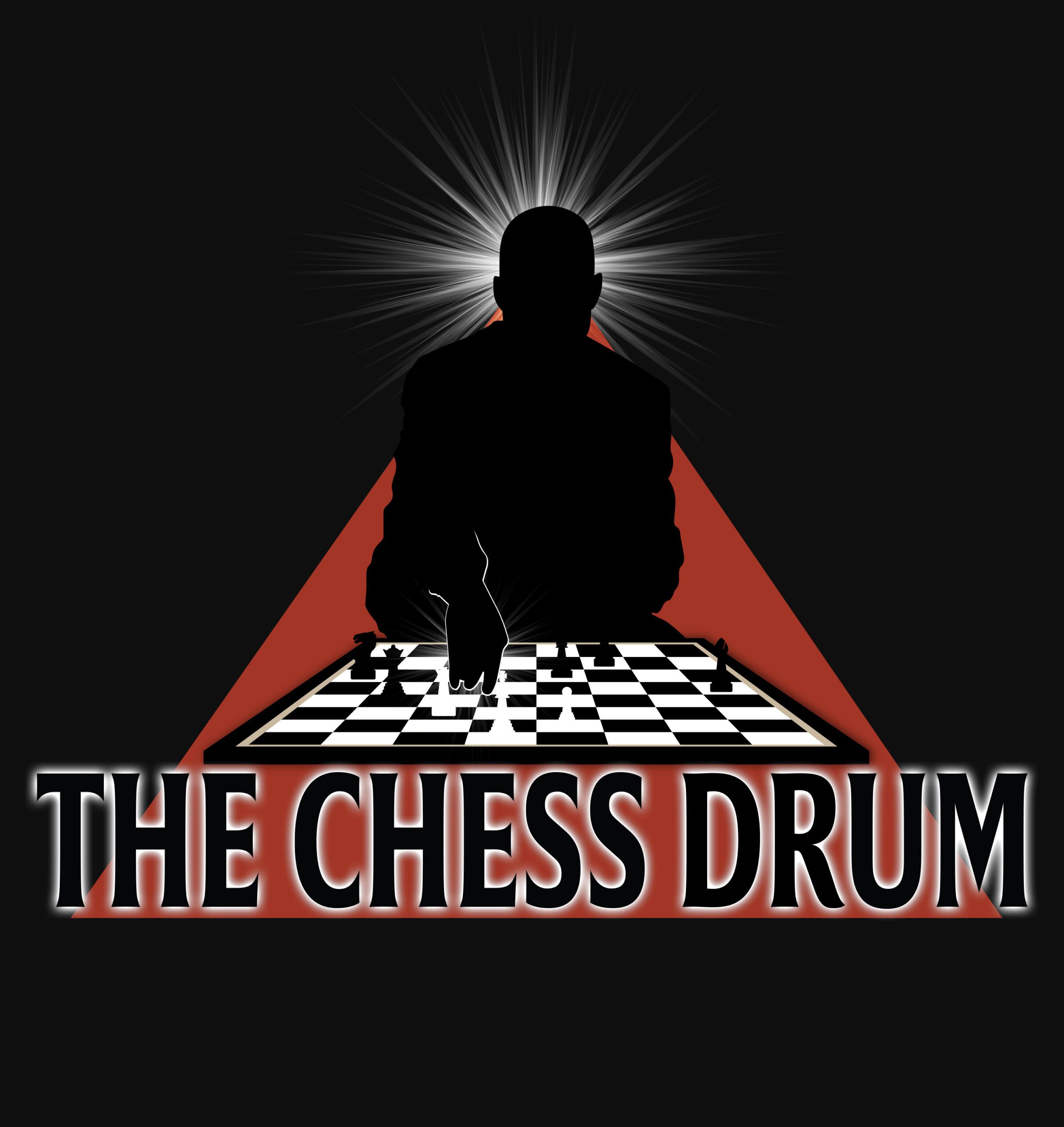
Chess has nothing to do with Black Africa . And the Moors of Spain were not Black. Indeed they enslaved so many Africans that to this day Blacks in North Africa and the Middle East are called “abid” Abid means slaves
Sorry Franco. Your knowledge is totally simplistic on so many levels. Yes… slavery did exist (as it has in many places), but what does that have to do with this article?
Firstly, the word is “abdi,” not “abid.” More precisely it means “servant” and is the same in Arabic and Hebrew. It is not a negative connotation and also has a pretense of being used in combination with “God,” or “Servant of God.” It is a common name in the Muslim world. For example, a famous Berber ruler was “Abd-al-Mu’min” where Abd does not mean “slave.” Your knowledge of the context is grossly distorted.
Secondly, what does “Moor” mean? There are many accounts of the Moors and who they were. Many sources point to their African ancestry. However, the forces that invaded Spain were multi-ethnic. The name “Moor” itself was used synchronously with “Negro” in the European Renaissance. There were many spellings for “Moor” which included “Moro,” “Moir,” “Mor,” “Mora,” “Maure,” “Maurus,” “Morisco,” “Moorens,” “Moreno,” “Moricaud” essentially meaning “Black” or with a “swarthy appearance.”
Franco, Moor was typically in reference to the dark-skinned or the so-called “blackamoors.” Even the names of regions took on names that were inhabited by African Muslims such as “Mauritania.” Ancient Mauritania was different from present-day Mauritania in West Africa which is a nation of African Muslims. The connection is clear. Some of the early Moors were also prevalent in present-day West Africa in places like Senegal and Mali. They were part of the group known as the “Almoravids”.
In The Moor of Antiquity, James Brunson and Runoko Rashidi cite a source stating,
That being said, it is still not accurate to say that all of those who were called Moors were Negroid in the context of the region. Just as with Black people today, there were variations. The Arabs did not generally use the term, “Moor,” but “Berber.” The term “Berber” was applied to the entire region and referred to a more multi-ethnic group of Islamic people in the Maghreb.
“Algers–Negres jouant aux Echecs”
(Algerian Moors playing chess)
In the Middle Ages, the term “Moor” was actually not a positive connotation because at that time the Spanish were attempting to drive the Moors from the Iberian peninsula. The dark complexion and Islamic faith became a symbol of guile, evil and hate. In medieval literature, demonic figures were depicted with Black faces. This was to foment aversion to the invaders. During the invasion of Tariq ibn-Ziyad in 711 AD it was recorded that some of the invading troops were “Sudanese,” a way of referring to Black Muslims. “Moor” was just a reference to African Muslims who were Black.
There are also many authentic depictions of the art showing the battles between Moors and the Spanish. There are a lot of debates on the composition of the Moors and the relationship with the Berbers. Not even erudite scholars who have read the ancient writings deny the presence of African Muslims as the “Moors of Spain.” It was a categorical label.
As far as chess Franco, the Black Africans only knew “shatranj” and not the chess we know today. It had not been invented yet. Shatranj was the forerunner of chess today and it was brought by the Moors and Berbers into Spain along with many other games. After the downfall of the Moors, the game (which traveled from India) was changed in part to honor the victorious Queen of Spain (Isabella). The game took on a more Christian (Catholic) symbology.
Note: I’ve read your online political musings from Europe. They are overtly anti-American. Don’t worry. I disagree with many American foreign policies so I understand. However, your postings show a lack of nuance in the understanding of geopolitics and history.
ERIN BLAKEMORE,”Who were the Moors?” National Geographic, 12 December 2019.
https://www.nationalgeographic.com/history/reference/people/who-were-moors/
Of course, Ruy López de Segura of Spain was the first opening theoretician having created one of the most famous openings that bears his name.
https://en.wikipedia.org/wiki/Ruy_L%C3%B3pez_de_Segura#/media/File:Luigi_Mussini-_Leonardo_da_Cutro_e_Ruy_Lopez_giocano_a_scacchi_alla_corte_di_Spagna.jpg